02 April 2025
|
Michael Burzan highlights just of a few of the many stamps issued for the Eurovision Song Contest.
What Stamps were Created for the Eurovision Song Contest?
On 25 February 2008, Poste Italiane issued a 60c miniature sheet dedicated to this song as one of the greatest hits ever to come out of the contest (Figure 1). A postal folder accompanied the issue, containing various versions of the FDC, a maximum card and a DVD, showing the first presentation of the song at San Remo Festival in 1958. The official price for the set was €15; meanwhile, some second-hand offers start at lower levels.
Suggested article: Your guide to Penny Red stamps
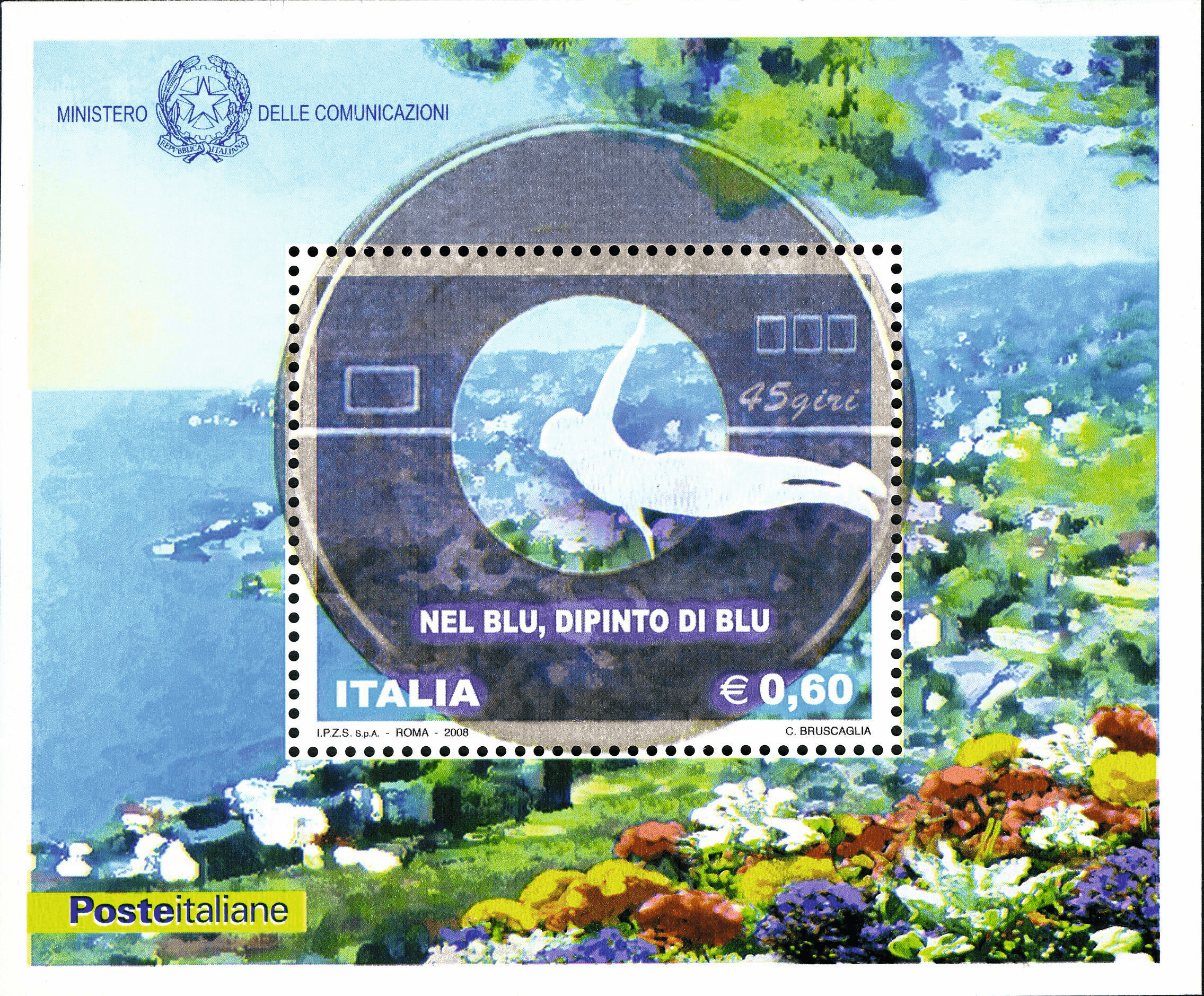
1 2008 Italian miniature sheet dedicated to a hit from the 1958 edition of Eurovision
After Dana’s first victory for Ireland with ‘All Kinds of Everything’ in 1970, the event of April 1971 took place in the Gaiety Theatre in Dublin. Irish Post used a bi-coloured cancellation ‘EUROVISION SONG CONTEST 1971’ and Irish Radio produced ‘Official Commemorative Covers’, obviously still inexpensive to be found.
Was there an ABBA stamp issued for the Eurovision Song Contest?
The most successful ever Eurovision winner was the Swedish quartet ABBA, who were rocketed to fame after their ‘Waterloo’ victory at the Eurovision Song Contest in Brighton on 6 April 1974. In 1983, Swedish Post issued a souvenir sheet entitled ‘Music i Sverige’, with five stamps on ‘music’ thematics, because 1 October 1983 had been declared World Music Day by UNESCO International Music Council. One of the stamps showed the popular group ABBA engraved by Czesław Słania, using a photo by Anders Hanser (Figure 2).
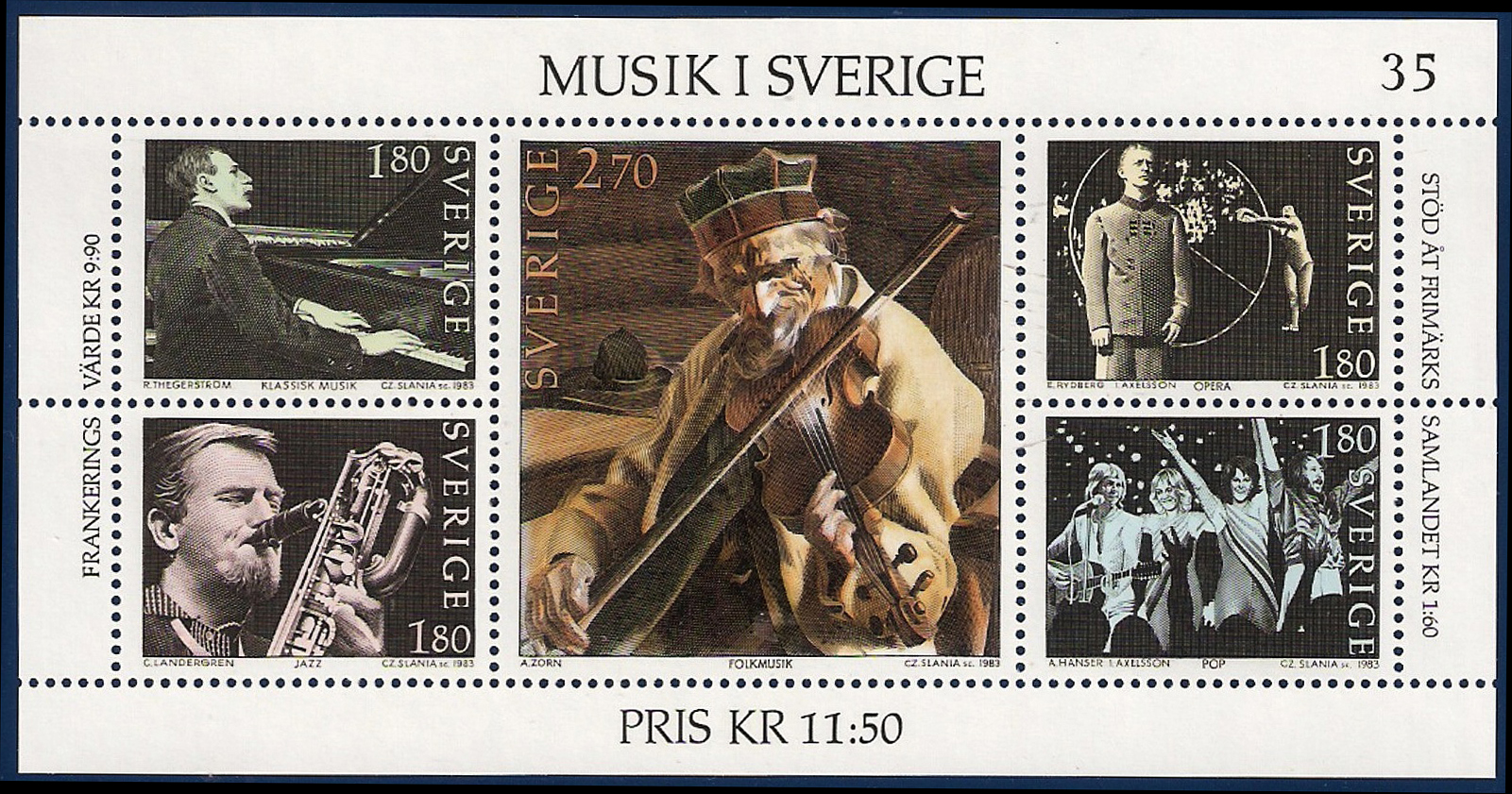
2 ABBA stamp of 1983 engraved by Czesław Słania
Which Countries Have Issued Eurovision Stamps?
I remember years ago a first-day cover of the sheet with the signatures of the group was sold by a stamp dealer in a stamp auction at about €50 of today. I wonder what the price would be these days. Another ABBA stamp was issued in March 2000 in Sweden, showing them at the Eurovision Grand Prix. In the same year, the group let an offer pass to re-unite for a modest one billion dollars!
A personalized Dutch stamp sheetlet of ten was produced in 2008, designed by Max Kisman and printed by Joh. Enschedé & Zonen, showing a publicity group photo for an album set about the 1970s.
One more global musical career started at the Eurovision Song Contest, when in 1988, Canadian singer-songwriter Céline Dion won the trophy for Switzerland. Meanwhile, she has been portrayed on several overseas stamp issues, like Guinea, Central African Republic or Ivory Coast. After her victory, the competition was hosted in Lausanne, Switzerland, in May 1989, where a special cancellation came in use.
Eurovision Stamp Postal History
The first postal administration to issue special stamps for the Eurovision Song Contest was Yugoslavia, when the contest took place in Zagreb (Figure 3). The two designs from 5 May 1990 of 6.50 dinar and 10 dinar (Mi 2417/18) were printed in sheetlets of eight stamps and one perforated tab, in an edition of 170,000 sets.
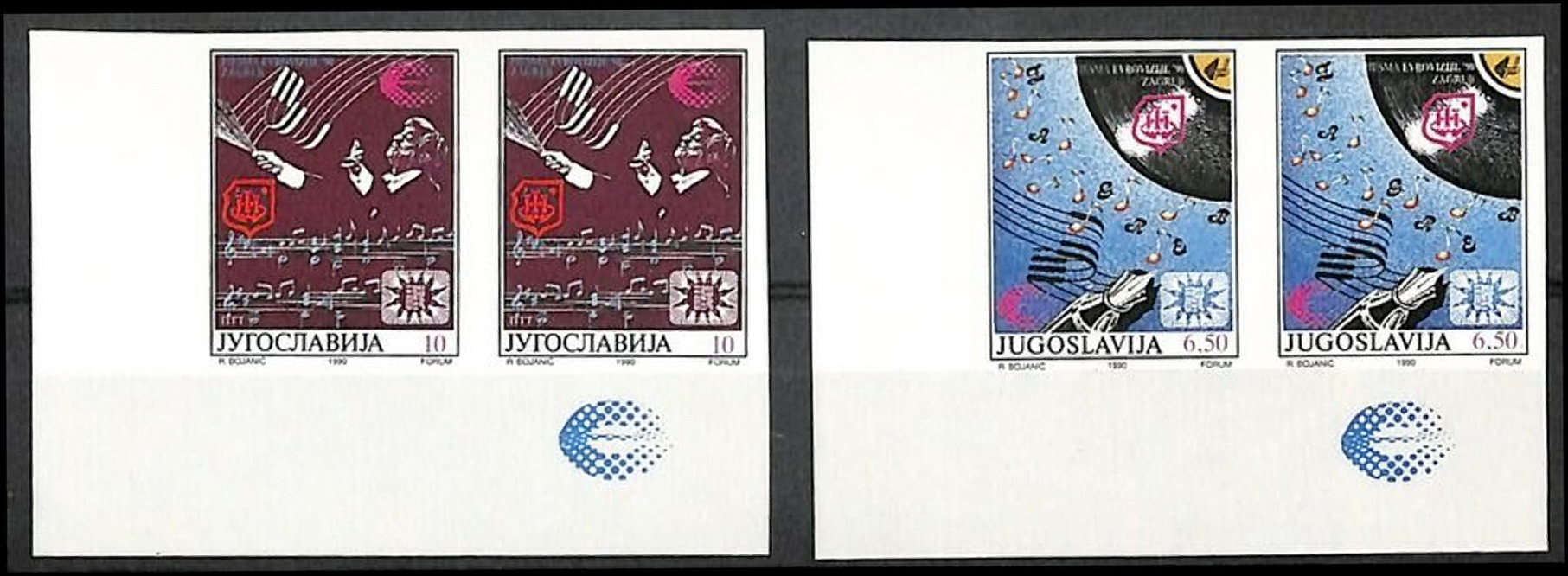
3 In 1990, Yugoslavia, was the first country to issue stamps for Eurovision
Norway contributed a set of four designs on 18 May 2010 on the primary theme ‘Popular Music & Dance (Rock)’ (Mi 1720/23). Pictured are Eurovision Song Contest winners of 1985, the duo ‘Bobbysocks’ (‘Let it swing’) (Figure 4); Secret Garden of 1995; Alexander Rybak of 2009; and Jahn Teigen, who took part between 1978 and 1983. They were printed alternating in self-adhesive coils by Joh Enschedé Security Printers in a total of 7.63 million sets, each indicating a denomination ‘A INNLAND’ as postage value, then 8k.50.
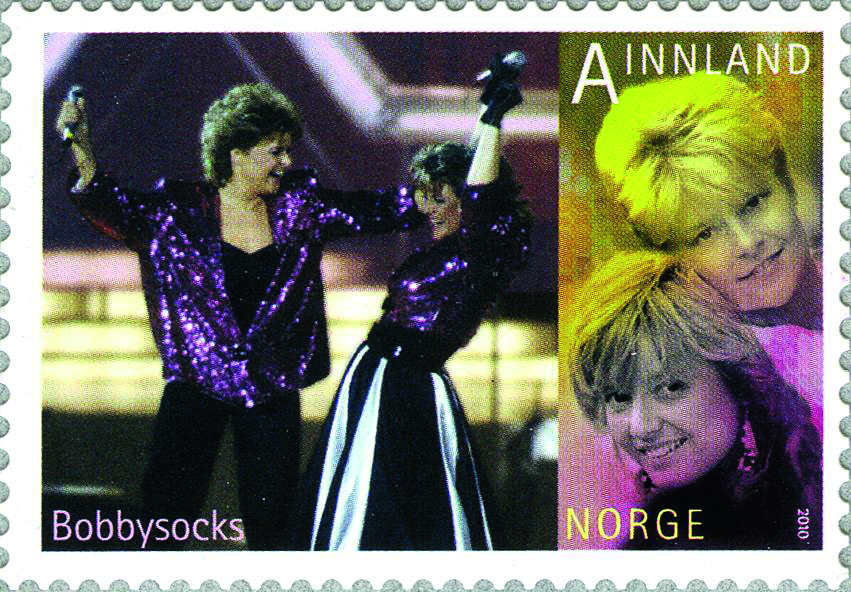
4 ‘Bobbysocks’, who won in 1985, on a 2010 stamp from Norway
A self-adhesive sheetlet with four fancy-shaped stamps at 70c each accompanied the Eurovision Song Contest in Helsinki, Finland, on 9 May 2007 (Mi 1843/46/Block 44). The release showed the logo and pictures of various Finnish representatives, including the ‘Monster band’ Lordi who won in 2006 (400,000 issued) (Figure 5).
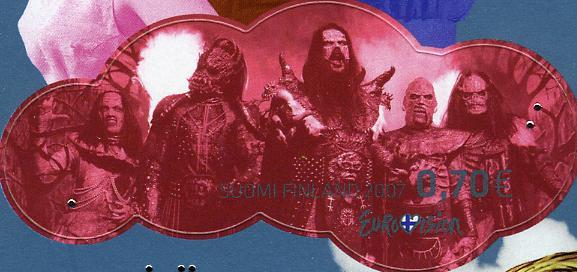
5 2007 issue from Finland showing Lordi, who won the contest in 2006
What is The History Behind the Eurovision Song Contest?
Political problems in Europe may support the desire for more ‘harmony’ in the concert of nations. The forthcoming European Song Contest in Basel, Switzerland, from 13 to 17 May will show if politics also play a role for spectators and voting this year.
This annual song contest was originally launched as ‘Grand Prix Eurovision de la Chanson’ in May 1956, in Lugano, Switzerland, with a participation of seven countries. Over the decades, it has become a major event in worldwide television programmes which is publicly broadcast, with several hundred million people watching the fate of their national representatives every year in the national final.
What are Philatelic Souvenirs of The Eurovision Song Contest?
Meanwhile, the range of collectable Eurovision memorabilia also includes stamp issues, souvenir sheets, special cancellations, stationery, booklets and coil issues.
What was the first ‘World Hit’ of the Eurovision Song Contest?
The first ‘world hit’ resulting from a Eurovision Song Contest was the Italian entry of 1958 in Hilversum, Netherlands. Domenico Modugno’s ‘Nel blu, dipinto di blu’, better known as ‘Volare’, although only finishing third, went on to be a global chart success, received two Grammy Awards and was recorded in numerous versions in various languages or instrumental registrations. During the 50th anniversary of the Eurovision Song Contest, held in 2005 in Copenhagen, it was voted the second favourite entry in the history of the contest after ABBA’s ‘Waterloo’.
If you enjoy stamp collecting, stamp collectors can get the latest collecting news by signing up for the Collectors Club of Great Britain’s newsletter.







